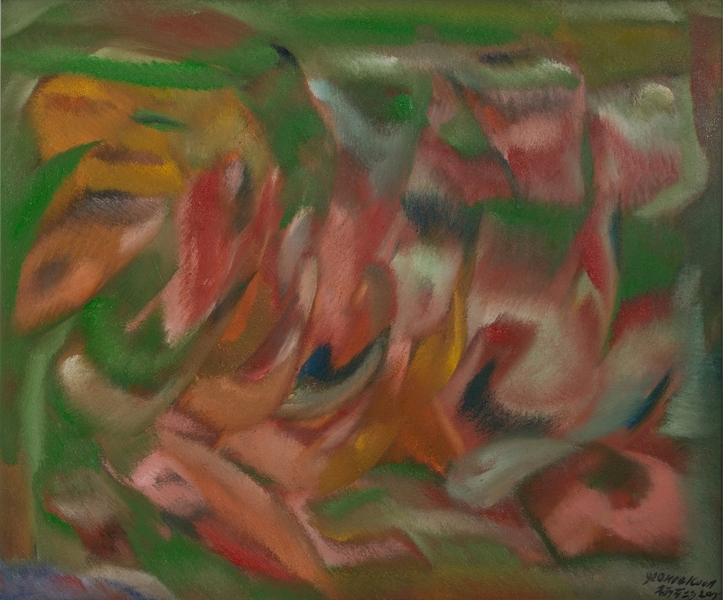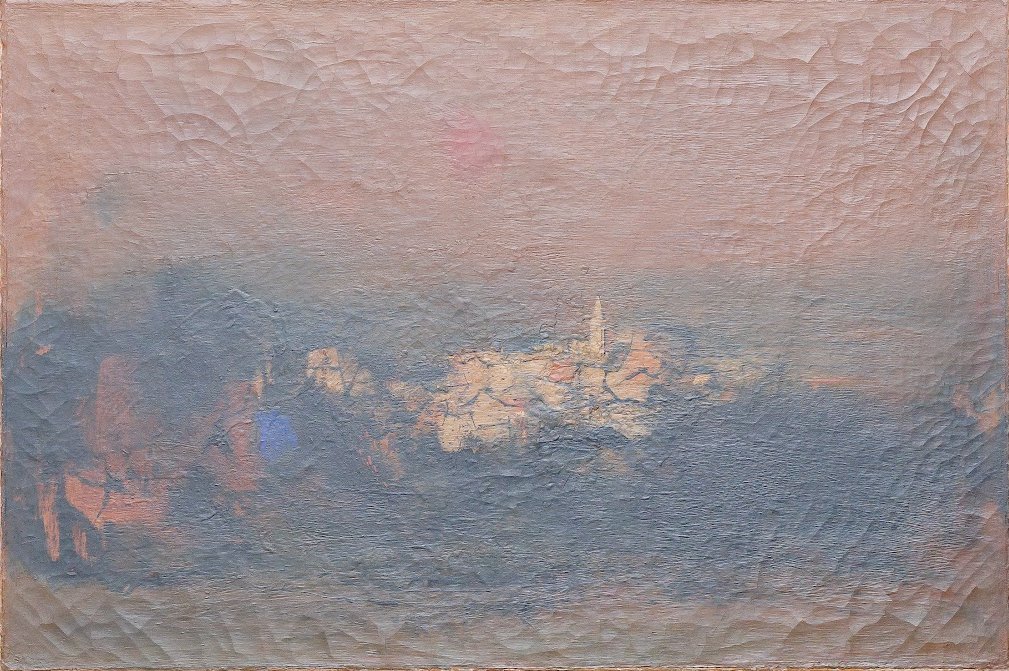Acrylic Painting on Canvas Team Bonding Art Jamming Singapore Visual Arts Centre
























Yeo Hoe Koon
Oil on Canvas
64 x 89.5 cm
Price Range: $16,000 - $20,000

Yeo Hoe Koon
Oil on Canvas
101 x 123 cm
Price Range: $26,000 - $32,000

Chen Wen Hsi
Chinese Ink and Color on Paper
50 x 54cm
Price Range: SGD $42,000 - $50,000

Cheong Soo Pieng
Red Tone
61 x 91.5cm
Price Range: SGD $108,000 - $138,000

Cheong Soo Pieng
Abstract Landscape
50 x 61cm
Price Range: SGD $95,000 -$128,000

Fan Shao Hua
Chinese Ink and Colour on Paper
100 x 100cm
Price Range: SGD $9,800 - $14,800

Fan Shao Hua
Chinese Ink and Colour on Paper
100 x 100cm
Price Range: SGD $8,800 - $13,800
Digital painting is an artistic creation form that utilises computers and specialised software. Unlike traditional painting, digital painting does not require paper, canvas, paint, or brushes. Instead, it involves drawing on a computer using input devices such as a graphics tablet, touchscreen, digital pen, or mouse. Below are some of the main characteristics of digital painting:
TOOLS OF DIGITAL PAINTING

Software: Commonly used digital painting software are Adobe Photoshop, Corel Painter, Clip Studio Paint, Procreate, etc.
Hardware:
Our student using Procreate on IPad to sketch out her reference

APPLICATIONS OF DIGITAL PAINTING
Digital painting is widely used in various fields:




Digital painting requires a series of skills and knowledge, including artistic fundamentals, software operation, and the use of digital tools. To excel in digital painting and create outstanding works, a strong foundation in art is essential. Here are several key points to focus on during we learn digital painting:



Singapore Visual Arts Center is launching a professional digital painting course. The course consists of two parts:

(commencing from the school holiday period of October, November and December 2024)
Date/Time:
Mondays and Thursdays, 3.30PM-5.45PM
Venue:
Dhoby Ghaut Studio (10 Penang Road, #01-02 Dhoby Ghaut Green, S238469)
Price: $480nett inclusive of art materials
Learning Contents & Learning Objectives:

1st Session: Define characteristics, traits, colours and accessories of your character.

2nd Session: Detailed studying of character’s anatomy, sketching of character and begin digital sketch of character.

3rd Session: Continue of digital sketch, and begin on lineart and colouring.

4th Session: Completing character’s costume design and start learning to draw/paint character’s costumes and accessories.


Digital drawing and painting is the artistic process of creating visuals using digital tools and software. Artists utilize specialized software like Adobe Photoshop, Procreate, Paint Tool Sai or Clip Studio Paint, along with digital drawing tablets or computers. These tools offer a diverse range of brushes, colors, and editing options for creating stunning digital artwork.
Unlike a traditional artwork, digital artwork is known for its permanence and is accommodative to any corrections needed due to its digital rendering capabilities.
Digital painting software offers artists a versatile digital canvas for creating and refining artwork. While digital painting requires traditional painting skills, such as mastery of line, coloration, tonal variations, and perspective, artists utilize software tools to bring their visions to life. With a strong foundation in traditional drawing techniques, artists can produce realistic digital paintings with compelling 3D perspective effects.
Digital painting presents numerous benefits compared to traditional painting techniques. It enables effortless undo and redo functions and boasts a vast selection of digital brushes and effects that can be easily applied onto the artwork. Additionally, it offers the convenience of working without the requirement for physical art supplies or extensive cleanup, streamlining the entire creative process to within the software.
Explore digital artwork creation through a suite of softwares offered, and discover the one that works best for you.






Digital Manga Drawing guided by our instructor on IPad’s Procreate
Introducing the Professional Manga Drawing & Digital Painting Course [12 Sessions], designed to equip students with a solid foundation in manga drawing and painting while introducing them to digital drawing and painting techniques.
As part of the 6 sessions of traditional medium, students will create artworks with markers and watercolour, with all necessary art materials provided by our studio.
Following which, the digital art segment utilizes iPad, Apple Pencil, and the Procreate application. Covering the basics of digital drawing and painting, students will learn how to use these tools to bring their manga creations to life with the help of the different tools available on the digital drawing softwares.



Digital drawing and digital painting refers to the process of creating artwork using digital tools and software. It involves using a digital drawing tablet or a computer with specialized software such as Adobe Photoshop, Procreate, or Clip Studio Paint, which offers a wide range of brushes, colours, and other digital tools.

Pen pressure is crucial in creating good digital art, as it gives you the option of defining the thickness and heaviness of each stroke as if you are using a real pencil! This adds the feeling of depth to your work, making it more impressive.
Laptop users:
iPad users:
Free softwares like Adobe Fresco or Clip Studio works fine. If you have the budget, Procreate will be the best choice.


Unleash your creativity and bring characters to life through costume design! In this workshop, participants will learn how to conceptualize and create costumes that reflect their characters’ personalities, story backgrounds, and worlds. You’ll explore different fashion styles, materials, and cultural influences to craft unique and visually stunning costumes.
Character Costume Design involve visually expressing who the character is and how they fit into their world, helping the audience understand the character without needing much dialogue or explanation.
Schedule:
Monday 7.30pm-9.45pm
Thursday 3.30pm-5.45pm
Saturday 6.30pm-8.45pm

Course Structure Breakdown:
🕒 20-minute Intro: Learn the basics of digital art in a beginner-friendly session.
👩🏫 Teacher Demonstration: Watch a step-by-step guide to creating digital art.
🎨 Hands-On Project: Create your very first digital artwork.
💡 Q&A Session: Get your questions answered and receive helpful tips!

Do contact us via phone call, WhatsApp, and Email for more information!
Call/WhatsApp:6255 0711
Email:info@visualartscentre.sg

Address:
10 Penang Road, #01-02 Dhoby Ghaut Green,
Singapore 238469
Exit from Dhoby Ghaut MRT Station Exit B and turn left, we are there in 30m!

Address:
AZ@Paya Lebar, 140 Paya Lebar Road, #03-04,
Singapore 409105
Exit from Macpherson MRT Station Exit A and turn left, we are right across the road, 1 minute walk away!
|
|
|||||||||||||||||||||||||||||||||||||||||||||||||||||||


SAT |
10:30am - 12:45pm1pm - 3pm
|
SAT |
|
10:30am - 12:45pm1pm - 3pm
|
|


Have any questions? Please drop us an enquiry form and we'll respond to you as soon as we can!
"*" indicates required fields
Have any questions? Please drop us an enquiry form and we’ll respond to you as soon as we can!
"*" indicates required fields
Click and get to our WhatsApp
Embark on a captivating journey into the vibrant world of digital art! Our Foundation in Digital Art workshop invites budding creatives aged nine and above to unleash their imagination and hone their artistic skills in a dynamic, supportive environment. From mastering basic digital tools to crafting mesmerizing digital masterpieces, children will explore a spectrum of techniques guided by seasoned mentors. Through hands-on activities and interactive sessions, participants will discover the endless possibilities of digital expression while fostering creativity and critical thinking. Join us for an exhilarating adventure where young artists transform ideas into stunning visual realities, igniting a passion for digital art
In the Batik Introduction Handkerchief Painting workshop, participants will learn the traditional art of batik, a wax-resist dyeing technique originating from Indonesia. The workshop begins with a brief history and overview of batik, highlighting its cultural significance and various techniques. Participants will then observe a demonstration of applying wax with tjanting tools and dyeing the fabric. Following the demonstration, each participant will design and create their own batik handkerchief, applying wax to create patterns and then dyeing their fabric. The workshop concludes with a group discussion, allowing participants to share their creations and reflect on their learning experience.